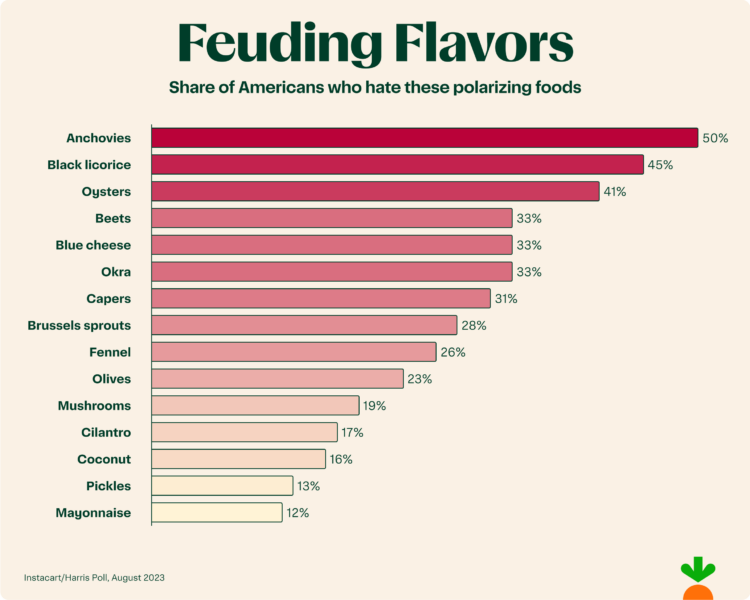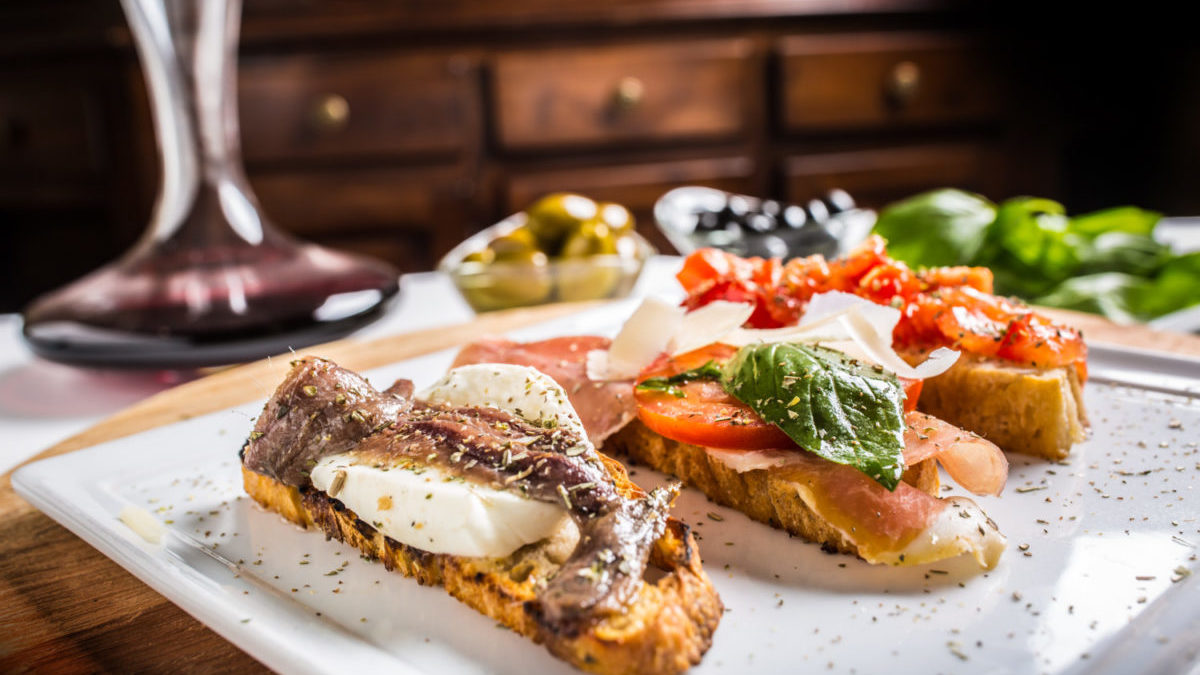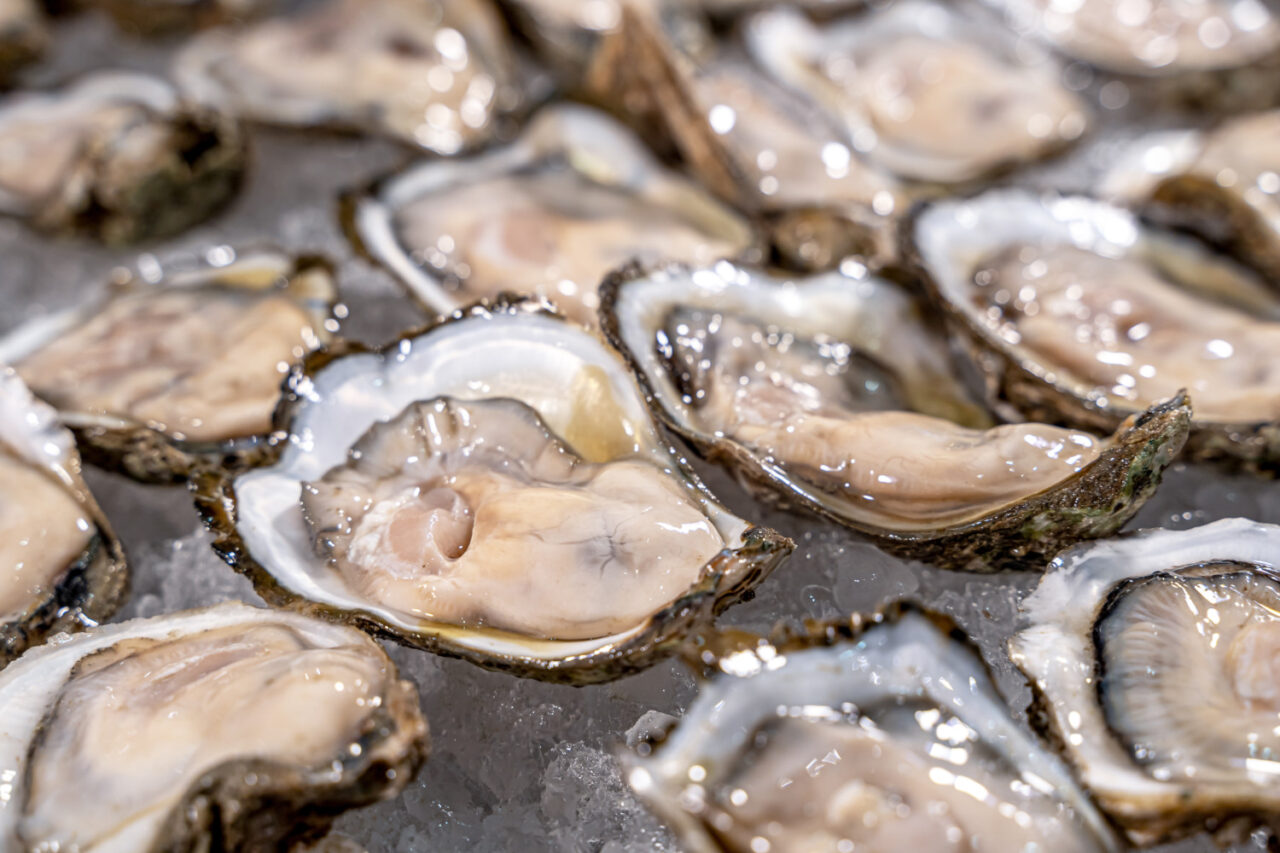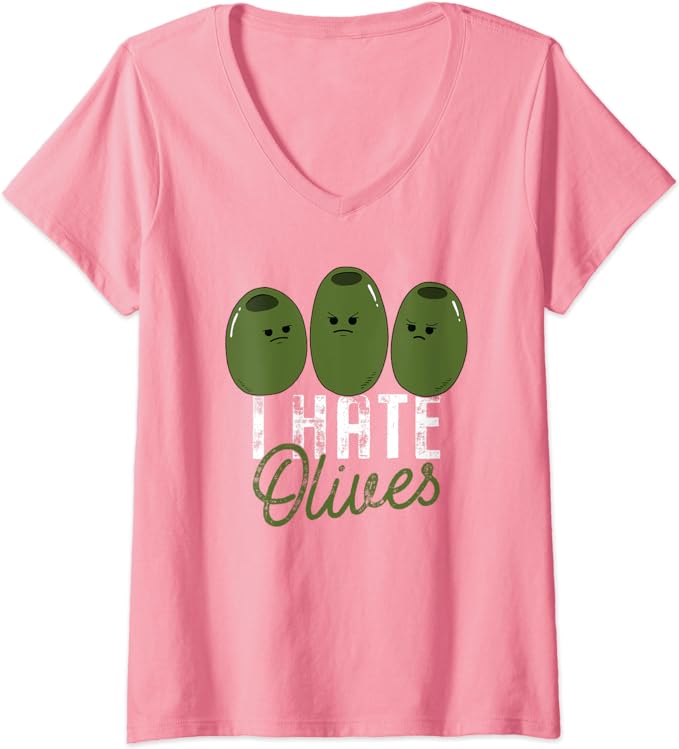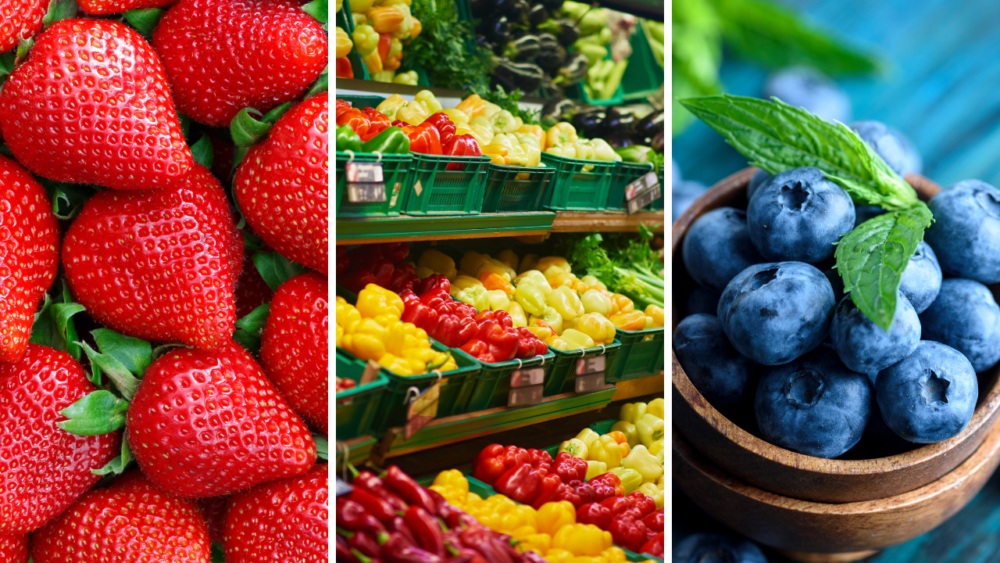These are the most hated foods in the US
Are you making me a fancy pasta dinner? Don’t you dare put olives in it. I will spit it out and then reconsider our friendship.
On the other hand, if you’d like to put pickles on my sub sandwich, I will eat that right up.
We all have our culinary preferences, and some foods are more divisive than others. Some troublemakers over at Instacart recently stirred this pot, commissioning an online Harris Poll of more than 2,000 Americans with a collection of questions. They created a list of polarizing foods and then asked respondents, “Which of these foods do you hate?”
Then they gathered and analyzed the data, ranking the foods from most to least hated. Yes, olives made the list. (And so did pickles!)
Here’s a chart with the results:
Top 3 Most Hated
The top three most hated foods aren’t exactly head-scratchers: they are anchovies, licorice and oysters.
“Anchovies possess a briny, fishy flavor profile, oysters give off a super slimy mouthfeel, and licorice shocks the tongue with an unmissable anise and fennel flavor,” Laurentia Romaniuk, Instacart’s Trends Expert, says in a statement. “On top of that, they all present chewy textures that can prove challenging for certain people. The complex interplay of these unique flavors and textures is likely why they’re at the top of the list, and it’s also the reason we’re not seeing foods like white bread show up.”
MORE:These are the 4 most popular snack foods in the U.S.
At the risk of insulting some strongly opinionated foodies, let’s discuss the cold hard facts presented above. I’m talking to you, anchovy lovers. Let this be your warning that ordering anchovies on a pizza ensures that at least half of those sharing it will consider the pie ruined.
Are you on a date with a woman? There’s an even greater likelihood that you’d be committing a faux pas, as the survey found that 58% of women detest anchovies.
Are you living in Missouri, Indiana or Alabama? Just stop it with the anchovies already. They hate them there, based on Instacart data revealing those states as the ones ordering the fewest amounts of this fishy delicacy.
It may seem odd that black licorice earned the second spot on the most hated foods list (eight places above olives!). But one theory about why it’s so hated is that many people associate its taste with the flavor of NyQuil, and no one wants to be reminded of being sick. Interestingly, there’s both a gender and a generational divide, with men (35% hate it compared to 45% of women) and people over 65 (37% hate it compared to 48% of people ages 18-54) tolerating this polarizing flavor better.
Interestingly, many people say they prefer red licorice to the black kind. But so-called red licorice (like Twizzlers or Red Vines) isn’t actually licorice at all.
“Black licorice candy is flavored with the extract of the licorice plant,” says Kelila Jaffe, Food Program Coordinator for the Department of Nutrition, Food Studies, and Public Health at New York University. “Other candies of similar form use the name as well, but are not actually flavored with licorice extract,” she told HuffPost.
Oysters may have a longtime reputation for being an aphrodisiac, but 41% of the survey’s respondents clearly don’t think it’s worth ingesting this slimy food. There’s a bit of a gender divide in the findings, though — with 51% of women and only 30% of men claiming to hate them.
MORE: Can you open (and eat) food before you buy it at the grocery store?
Weirdly, Instacart also reports that three of the top five oyster-ordering states aren’t near a coast: Montana, North Dakota and Wyoming. Perhaps they seem more exotic to landlocked residents?
Why We Hate Certain Foods
The top three reasons Americans gave for hating a certain food were smell (66%), strong flavor (57%) and texture (57%).
“There’s a cultural element to what you like, because of your exposure to it,” Ellie King, a sensory director at MMR Research told “Today.” “If you’re repeatedly exposed to something over time, you’re more likely to enjoy it. That starts from childhood … I’m Australian, and spicy food for me is a no-go because I had never been exposed to it. And so when I came to the U.S. and tried a Mexican meal for the first time, I said, ‘Never again.’ With time here, obviously, I’ve gone back and now I love it. But I still keep it mild.”
In fact, the survey also found that most respondents (69%) claimed to have encountered a food that they didn’t like at first but ultimately grew to enjoy. No doubt they had a similar experience of being gradually exposed to the food again and again until they began to feel differently about it. Rather than avoiding a food you abhor, you might intentionally and repeatedly try it. In this way, you can train your taste buds to like it — or at least not to gag!
The Instacart survey also found that 37% of Americans are eager to try new foods that are known for being divisive. It did not ask them whether they were eager to re-try a food they hate and train themselves to like it.
I know my answer to that question. Get out of here, olives! Get off my plate and go spoil someone else’s meal!
If you also have a low opinion of olives, please feel free to join me and announce it to the world. Buy yourself this T-shirt at Amazon for $17.99!
Which foods do you hate?



